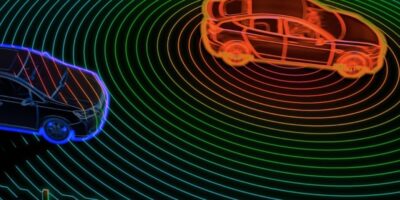Maxim speeds in with tiny LiDAR ICs with higher bandwidth for faster self-driving cars
Designers of automotive self-driving systems can now enable higher-speed autonomous driving through what is described as the industry’s fastest and smallest Light Detection and Ranging (LiDAR) ICs from Maxim Integrated Products.
The MAX40026 TDFN’s package size measures 4 sq mm and the MAX40660/1 TDFN package size is 9 sq mm. Maxim’s TIAs support 128 channels with an industry high bandwidth of 490MHz for MAX40660 and 2.1pA/√Hz input-referred noise density to support higher accuracy distance measurement in LiDAR applications. In addition, low propagation delay dispersion of the MAX40026 (10 picoseconds) contributes to accurate detection of fixed and moving objects.
And Maxim says that the MAX40660/1 reduces current consumption by more than 80 per cent in low power mode.
Maxim states that compared to the closest competitive solution, the MAX40026 high-speed comparator and the MAX40660/MAX40661 high-bandwidth transimpedance amplifiers enable 10mph (15km per hour) faster autonomous driving at highway speeds by providing more than 2x higher bandwidth and accommodating 32 additional channels (128 v 96) to a LiDAR module within the same module size.
With automotive self-driving systems evolving from 35mph to 65mph and beyond, LiDAR sensors are playing an increasing role in the fusion of vehicle sensors for their ability to provide accurate distance measurement of objects.
According to Maxim, with more than twice the bandwidth and the ability to accommodate 33 per cent more channels within the same LiDAR module size compared to the closest competitor, the MAX40660/MAX40661 transimpedance amplifiers (TIAs) provide optical receiver designers with higher-resolution images that enable faster autonomous driving systems.
The system size of the MAX40026 high-speed comparator plus the MAX40660/1 TIAs is 5 sq mm smaller than the closest competitive solution, says Maxim, which allows developers to fit more channels into space-constrained vehicle platforms.
The ICs meet the automotive industry’s stringent safety requirements with AEC-Q100 qualification, enhanced electrostatic discharge performance and failure modes, effects and diagnostic analysis to support ISO 26262 certification at the system level.
“Automotive engineers need elements that support greater precision, lower power and smaller solution size to add next-generation LiDAR capabilities to cars rolling off the assembly line,” said Veronique Rozan, executive director of business management, Core Automotive and Special Projects at Maxim Integrated. “Advancements in LiDAR-based solutions will support greater driver awareness and safety from next-generation automotive navigation systems.”




